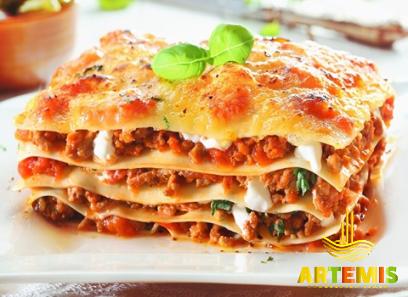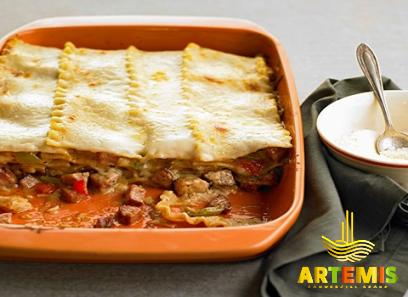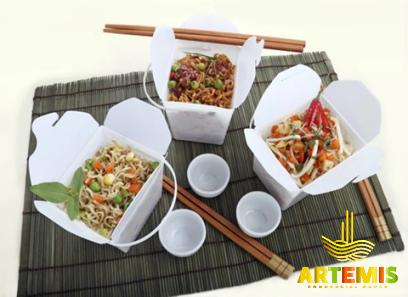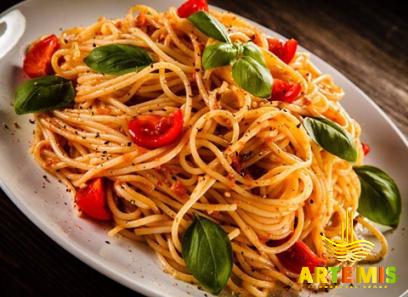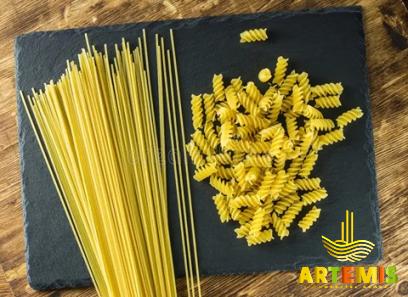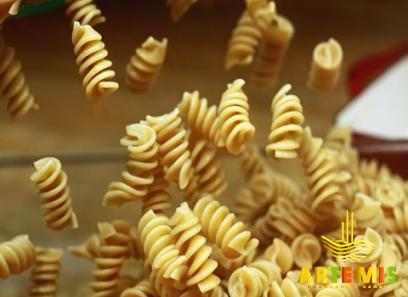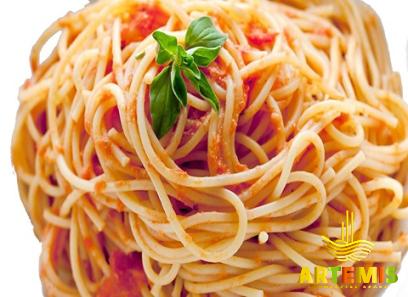How Homemade Lasagna with Fresh Pasta Can Be Frozen
Even though there is nothing quite like homemade lasagna, fresh pasta could be difficult for some people to whip up a dish anytime they wish to do so
With this respect, you will encounter how they can be frozen Too often, I find that I am too fatigued to appreciate the fruits of my labor of love, which requires me to boil the noodles, make the sauce and cheese filling, and then assemble and bake the whole thing
There are times when I’m so exhausted that I can’t properly enjoy the fruits of my labor
Since I always appeared to have some lasagna on hand, I thought it would be a good idea to finish and then freeze a lasagna dish
As a result of this, I always have a substantial amount of lasagna in my freezer
In most cases, this necessitates the preparation of two separate lasagnas at the same time (one for immediate eating and one for storage), but in certain cases, it may be possible to freeze simply one of them
In the following paragraphs, I’ll demonstrate how simple it is to freeze lasagna
Do you have a go-to lasagna dish you prefer to make? The lasagna is best when frozen after it has been constructed but before it has been cooked
This produces the greatest results
There is a widespread belief that when food is frozen in this manner, it causes the cheese and noodles in lasagna to become mushy after they have been defrosted; however, this is not the case
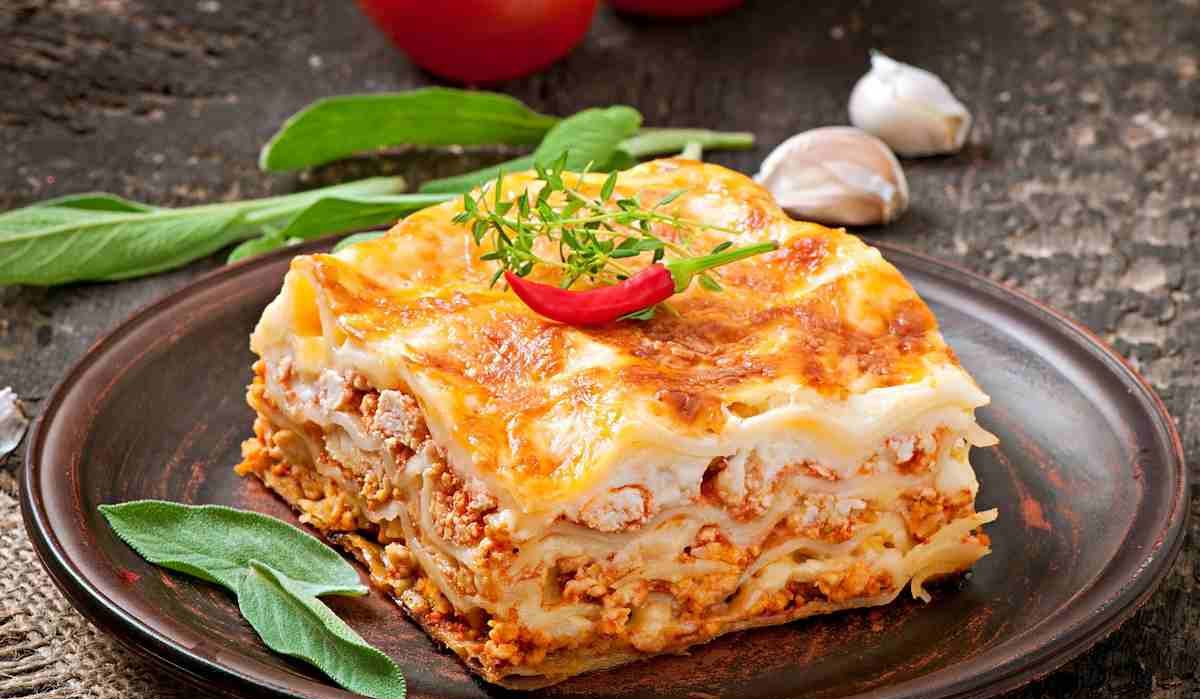
You have absolutely nothing to worry about if the lasagna that you made on the stovetop is already cooked
There is still the possibility of freezing it; in fact, you could do it right at this moment if you so desired
It is important to keep in mind that the texture of the meal will not be the same as if it had just come out of the oven
Before you go ahead and freeze the lasagna, you should give some consideration to the container that it will be stored in
It is best to use a disposable pan since it can be thrown away once it has been used (which means there is no mess to clean up!) and the rest of your cookware can be used as normal
When weighed against the alternatives, this choice offers several benefits
Always allow plates made of glass or ceramic to defrost completely before using them; otherwise, they run the risk of breaking
You just cannot forget about this particular point
You won’t leave this class without knowing all you need to know about freezing
After the lasagna has been prepared, allow it to chill for a while before serving
Putting hot lasagna in the freezer poses the risk of thawing the other meals inside, which might result in the spoilage of their flavor and the transmission of germs
When lasagna is frozen, ice crystals develop on the surface, and if the dish defrosts too rapidly after being frozen, these crystals may cause a freezer burn
As a consequence of this, it will be essential to pre-heat the dough
We ask that you put your faith in us when we say that the time spent waiting for the lasagna to cool down was time well spent
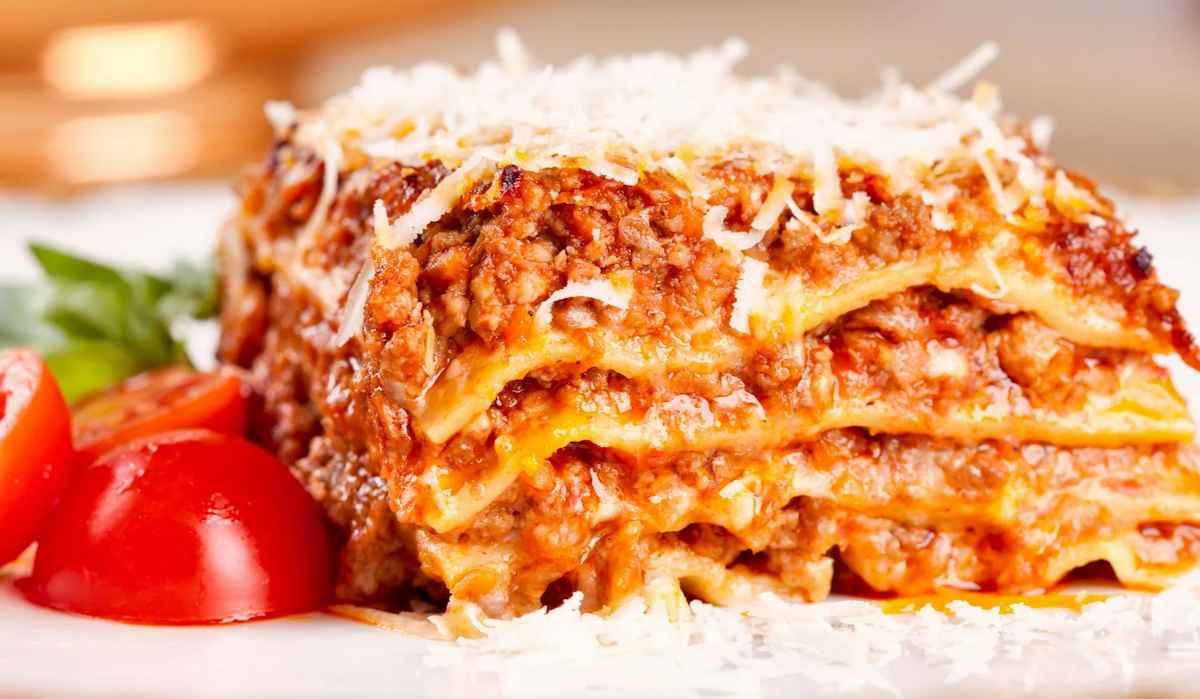
When previously cooked lasagna is cut up into individual portions and frozen in airtight containers, it may be used for other uses
As a result of this, lasagna may be used once again
After cutting the lasagna into individual servings, place them in containers that are suitable for the freezer, or individually wrap each slice in foil and plastic wrap before placing them in a freezer bag
The first alternative is easier to implement, while the second provides greater leeway for customization
Before you freeze your lasagna, make sure to label it clearly so that you can find it quickly
The name of the dish, the date it was cooked, and the suitable temperature at which to reheat it are all written on the aluminum foil in our home, which is marked with colored tape
This is a tradition that is typical in our family
You are welcome to use a pen or pencil to write on the paper if you do not have anything else to write on; however, you should be cautious not to tear the paper
If you want to freeze the lasagna in a dish made of glass or ceramic, you should let it sit out at room temperature for a few hours before putting it in the refrigerator
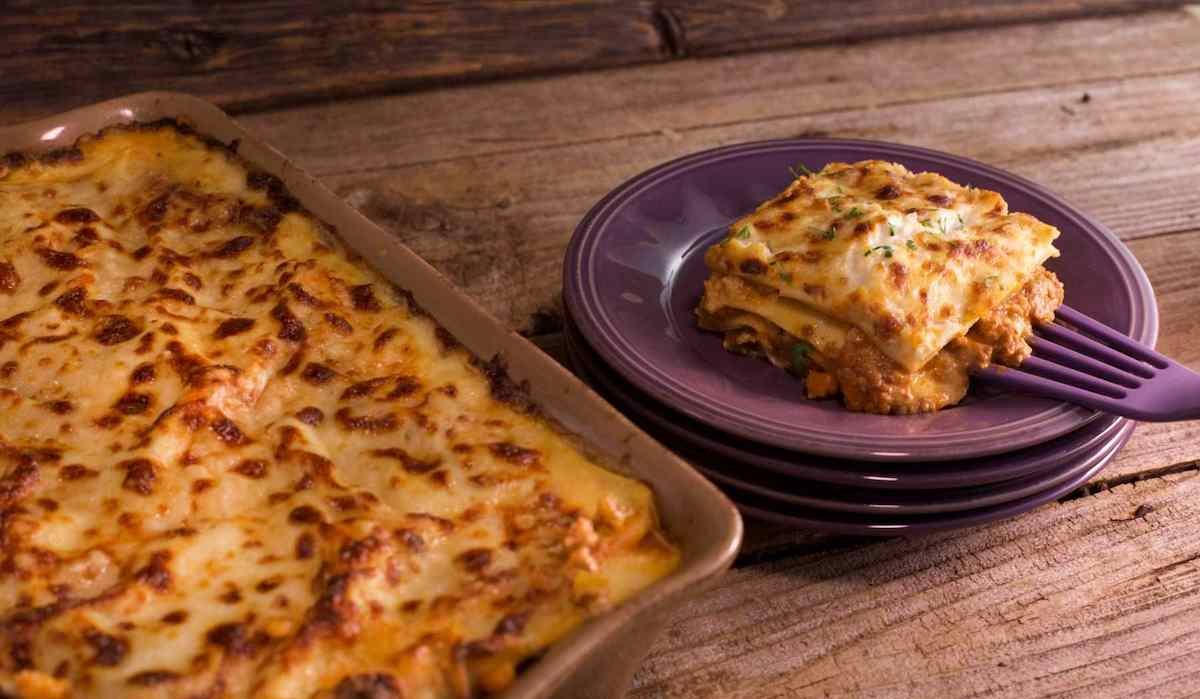
As a consequence of this, we should anticipate a dip in temperature into the 40s
The potentially detrimental effects of abrupt temperature swings may be prevented by the refrigerator from having an impact on these delicate containers
Before serving, lasagna should be refrigerated for a full day to allow the frozen layers to thaw properly
When you are ready to start preheating the oven to 375 degrees Fahrenheit, remove the food from the refrigerator and set it aside for thirty minutes so that it may come to room temperature
After taking the frozen lasagna out of the freezer and rewrapping it in aluminum foil, it should go back into the oven for a further 60–70 minutes of cooking time (a thermometer inserted in the center should read 165 degrees)
After removing the foil and returning the lasagna to the oven for 10 more minutes, it will brown evenly
After the lasagna has been taken from the oven, it has to sit for at least ten minutes to cool down
You will be able to reheat lasagna that has previously been made if you follow the instructions that have been given above
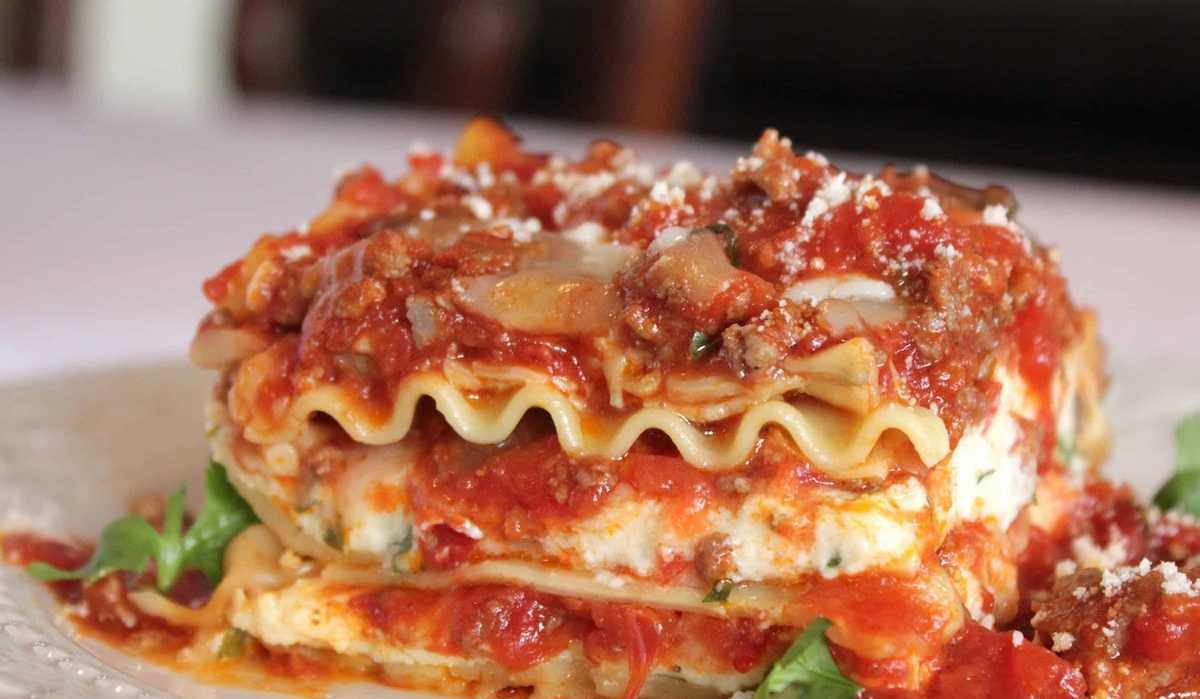
Lasagna with Fresh Pasta
In most parts of Italy, a traditional meal is a lasagna baked in the oven
However, regional variations exist in the recipe
Prepared with either fresh or dried egg pasta, it is a northern Italian specialty
Classic Bolognese or beef ragout, Parmigiano or grana cheese, and béchamel sauce are the usual additional components
Green lasagna sheets colored with spinach are often used in Emilia-Romagna
Nidi di rodine (Baked Pasta Rose) is a kind of lasagna that originates in the Italian region of Emilia-Romagna and happens to be one of my absolute favorites when it comes to baking lasagna (see link below)
Lasagna sheets are used to create a roll that contains ham, cheese, and other components before being baked in béchamel sauce
This dish is fantastic, and I used homemade lasagna to make it
Neapolitan ragout, meatballs, beef ricotta, provola, and pecorino cheese are used to create Neapolitan lasagna, a popular meal served at the city’s annual carnival
It’s interesting to note that southern lasagna is typically cooked without eggs and dried before serving
You won’t find ragout or beef sauce in certain parts of Italy; instead, they utilize mushrooms
In Veneto, red Treviso radicchio is occasionally used in place of ragù, while in Liguria, pesto is sometimes used in place of ragù
An Umbrian and Marches specialty, “vincisgrassi” has ragù enhanced with chicken
Ragù is swapped out for boletus, truffle, and pecorino in the Apennines, while eggplant is used in the alla Norma variation served in Sicily
You may also serve the meal with hard-boiled eggs
You won’t find tomatoes in every lasagna al forno dish from Italy
As a matter of fact, there are plenty of “white” recipes out there as well
La Lasagne Bianca, as it is known in Italy
I recommend trying the white lasagna from Puglia
Mushrooms and mardana are used in its preparation (see link below)
And trust me when I say that the food is really tasty
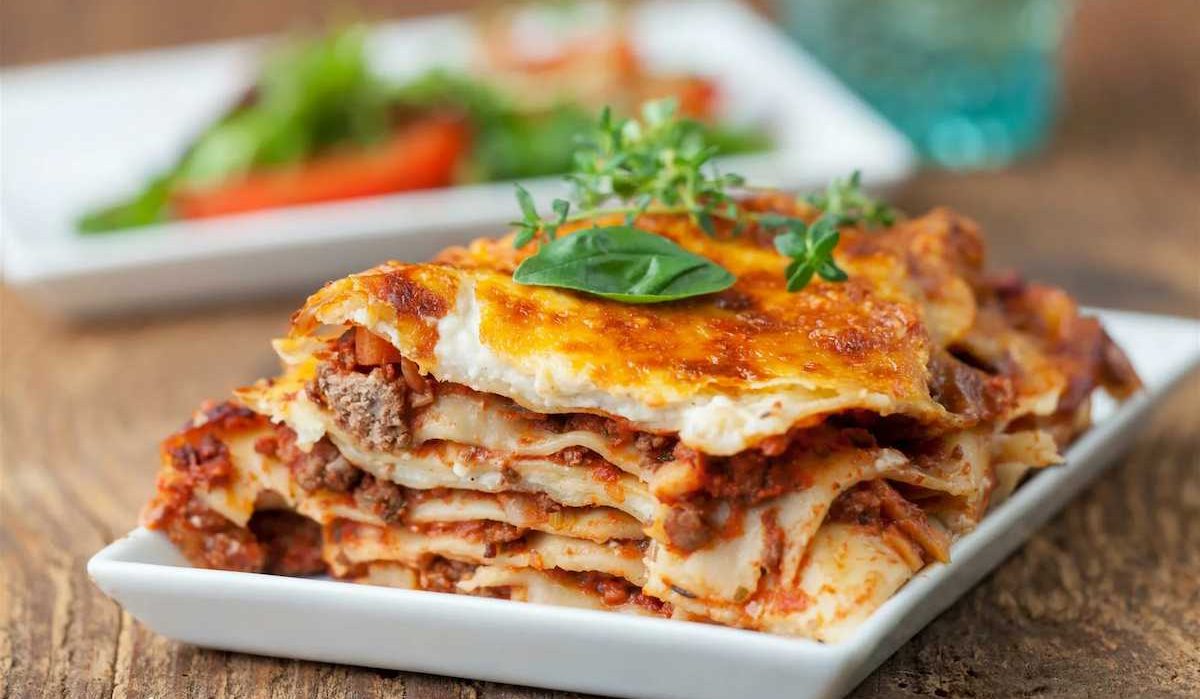
Vegetarians may rejoice, since it contains no meat
These delicacies (both the red and white varieties) are also known as “Pasticio” in northern Italy
Pastichio, similar to lasagna, is a layered dish cooked in the oven with a variety of ingredients, however the pasta used is not usually lasagna sheets
You may get freshly made lasagna sheets on sale all around Italy
However, a handmade lasagna will always be superior
Making it is simple regardless of whether or not you own a pasta machine
If you’re interested in trying something new the next time you prepare baked lasagna, why not give this method a shot? I have no doubt that you will want to do it again and again once you have tried it
Fresh pasta from the supermarket still can’t compare to the flavor of handmade spaghetti
The pasta for homemade baked lasagna may either be pre-cooked in boiling salted water for a few minutes or used uncooked
The sauce in the latter scenario should be thinner
I seldom make fresh pasta ahead of time
Knead the flour and water together on a big wooden board to produce the dough
Create a well in the middle and sprinkle some salt in it
Whisk the eggs after cracking them into the well (you can whisk the eggs in a small bowl and then add to the flour, or start by mixing the flour and eggs in a bowl and then place them on a baking sheet)
Using the well’s inner borders as a guide, gradually add additional flour as you begin to stir in the egg
Use a fork or a file for this
Keep blending the flour and eggs until you get a thick paste
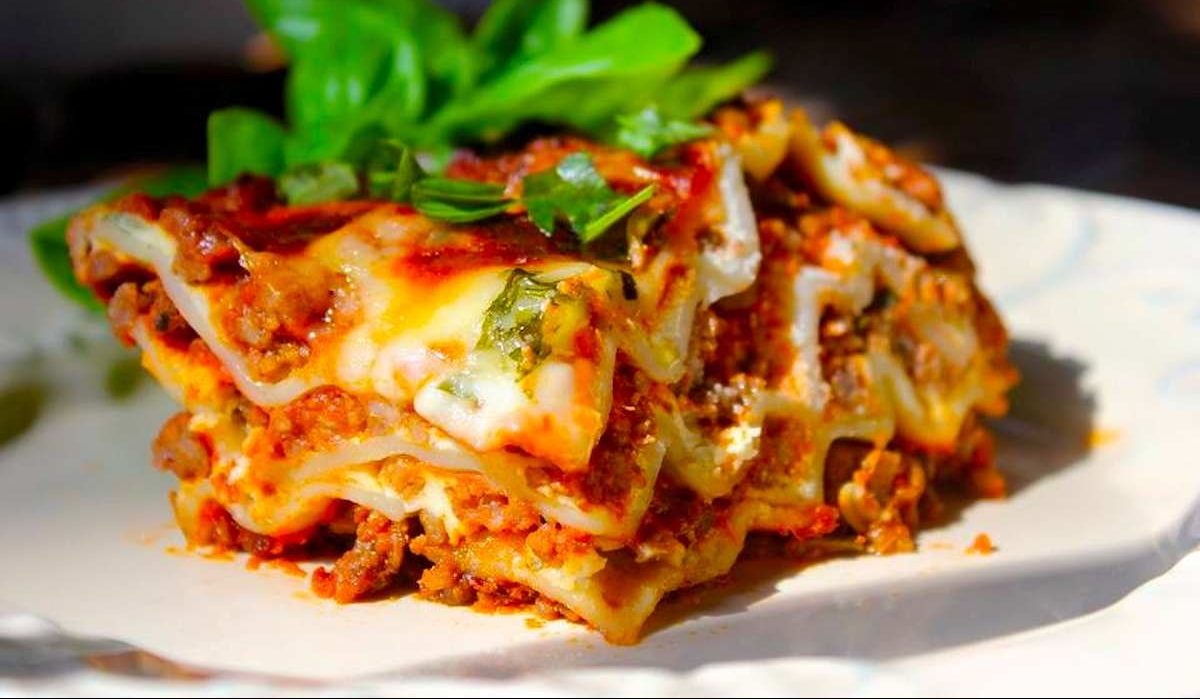
Now, using your hands, gather the dough’s borders towards the center, creating a large ball
Begin pressing your hand into the dough and kneading it like bread
Just keep at it for another seven to ten minutes
Bring the pasta dough to a smooth, elastic, and somewhat sticky state by kneading it
You may add extra flour if the dough is too sticky, but adding too much flour will make the dough tough
Wrap the dough in plastic and let it sit for 30 minutes
If using a pasta machine, remove a sixth of the dough, cover the remaining dough in plastic wrap to prevent drying, then roll out the removed portion until it is thin enough to pass through the machine’s rollers
I used the widest setting (#6 or #7) on my pasta machine three or four times, and then the narrowest setting (#4 for only a second or two)
For optimal thickness and length, the dough must be folded in thirds before each cycle through the machine
You may reroll the dough to a thinner sheet thickness by going to a number 2 or 3
Adjust the sheet’s length as needed
Roll the dough out until it is so thin that you can practically see your fingers through it if you aren’t using a machine
You may then reduce the size of the sheet by cutting it
While you’re about it, put the prepped sheets on a drying rack
Carry on with the rest of the dough
(Lasagna can keep for up to a week if it is entirely dry and firm
) See the recipe notes for alternatives to using a drying rack
Using freshly cooked pasta sheets is essential for a good homemade lasagna
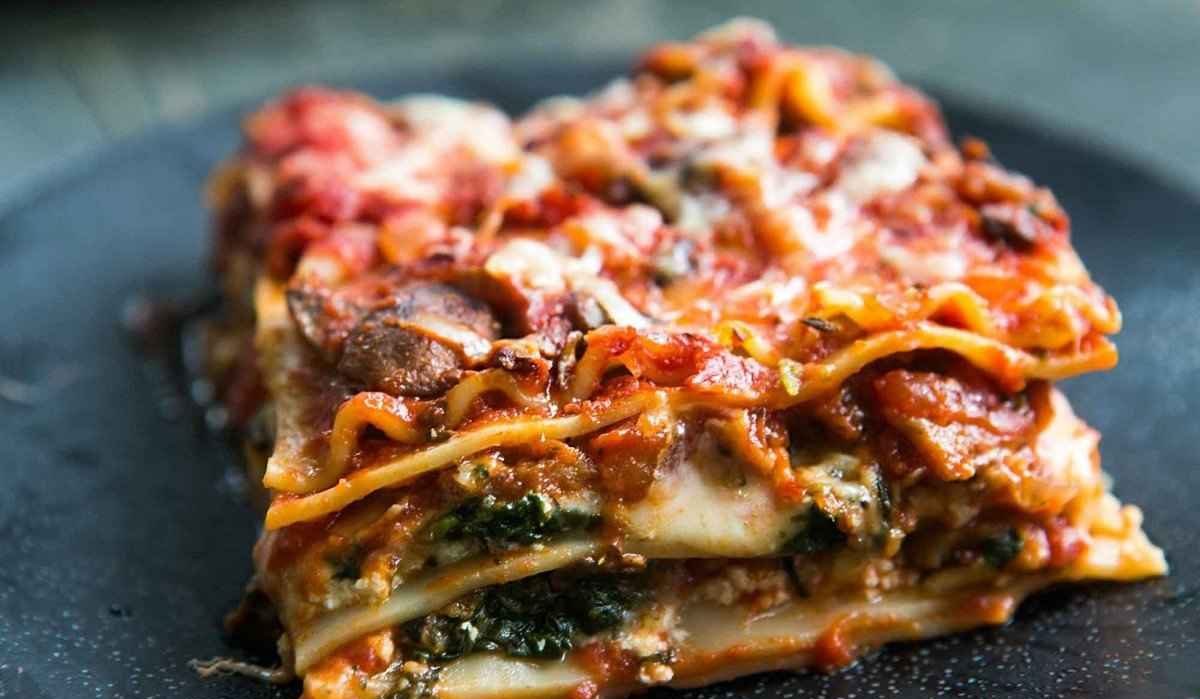
Light and delicious, this lasagna is made possible by the thin noodles that enable the sauce and cheese to permeate each other
The pasta for homemade baked lasagna may either be pre-cooked in boiling salted water for a few minutes or used uncooked
The sauce, in this situation, has to be thinner
(I don’t generally make fresh pasta ahead of time)
How many sheets you get from a batch of dough is determined by its thickness and the size of the pieces you cut from it
Fresh lasagna sheets, using this recipe, should weigh about at roughly 1 pound (or 500 grams)
The largest setting on my pasta machine is number 10
Some machines have a widest setting that corresponds to the lowest number
In the absence of a drying rack, pasta sheets may be prepared for quick cooking by being laid out on a tray covered with lightly floured paper
To dry your sheets, lay them out on a thin, lightly floured kitchen towel on a wire rack (or similar) set over a baking dish
Semolina flour is ideal for use in the drying process of pasta
